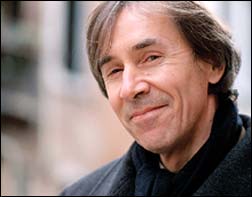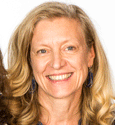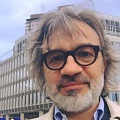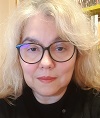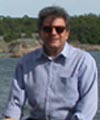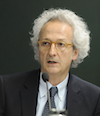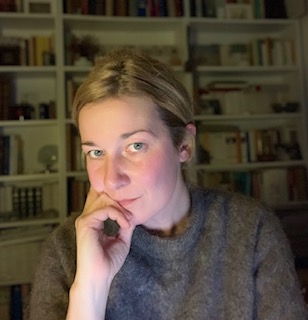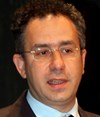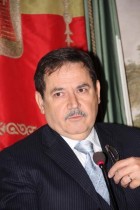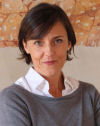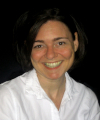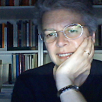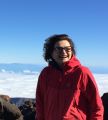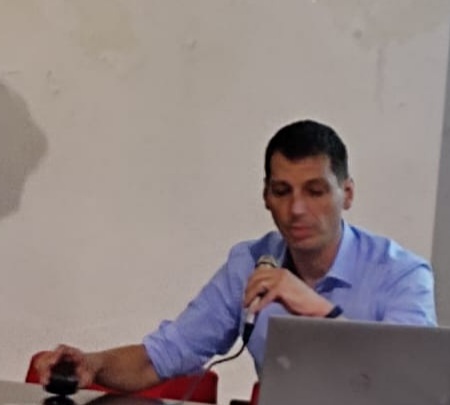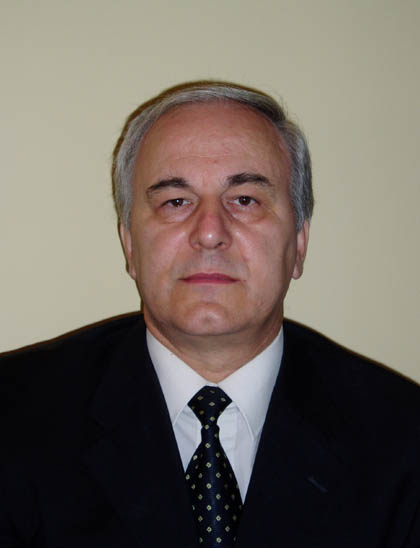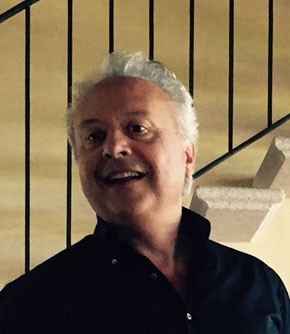Studying at the University of Verona
Here you can find information on the organisational aspects of the Programme, lecture timetables, learning activities and useful contact details for your time at the University, from enrolment to graduation.
Academic calendar
The academic calendar shows the deadlines and scheduled events that are relevant to students, teaching and technical-administrative staff of the University. Public holidays and University closures are also indicated. The academic year normally begins on 1 October each year and ends on 30 September of the following year.
Course calendar
The Academic Calendar sets out the degree programme lecture and exam timetables, as well as the relevant university closure dates..
| Period | From | To |
|---|---|---|
| Sem. IA (31.10.16 sosp.lezioni) | Oct 3, 2016 | Nov 12, 2016 |
| Sem. IB | Nov 14, 2016 | Jan 21, 2017 |
| Sem. IIA | Feb 27, 2017 | Apr 22, 2017 |
| Sem. IIB | Apr 24, 2017 | Jun 10, 2017 |
| Session | From | To |
|---|---|---|
| Sessione d'esami invernale | Jan 23, 2017 | Feb 25, 2017 |
| Sessione d'esame estiva | Jun 12, 2017 | Jul 29, 2017 |
| Sessione d'esami autunnale | Aug 21, 2017 | Sep 23, 2017 |
| Session | From | To |
|---|---|---|
| Sessione di Laurea Estiva | Jul 10, 2017 | Jul 15, 2017 |
| Sessione di Laurea Autunnale | Dec 18, 2017 | Dec 21, 2017 |
| Sessione di Laurea Invernale | Mar 23, 2018 | Mar 29, 2018 |
| Period | From | To |
|---|---|---|
| Festa di Ognissanti | Nov 1, 2016 | Nov 1, 2016 |
| Festa dell'Immacolata | Dec 8, 2016 | Dec 8, 2016 |
| Vacanze Natalizie | Dec 23, 2016 | Jan 7, 2017 |
| Vacanze Pasquali | Apr 14, 2017 | Apr 18, 2017 |
| Festa della Liberazione | Apr 25, 2017 | Apr 25, 2017 |
| Festa dei Lavoratori | May 1, 2017 | May 1, 2017 |
| Festa del Santo Patrono - San Zeno | May 21, 2017 | May 21, 2017 |
| Festa della Repubblica | Jun 2, 2017 | Jun 2, 2017 |
| Vacanze Estive | Aug 14, 2017 | Aug 19, 2017 |
Exam calendar
Exam dates and rounds are managed by the relevant Culture and Civilisation Teaching and Student Services Unit.
To view all the exam sessions available, please use the Exam dashboard on ESSE3.
If you forgot your login details or have problems logging in, please contact the relevant IT HelpDesk, or check the login details recovery web page.
Should you have any doubts or questions, please check the Enrollment FAQs
Academic staff
 bernard.aikema@univr.it (per tutti), aikemaforstudents@gmail.com (per studenti)
bernard.aikema@univr.it (per tutti), aikemaforstudents@gmail.com (per studenti)
 +39 045802 8197
+39 045802 8197
Amato Gianfranco
 gianfranco.amato@univr.it
gianfranco.amato@univr.it
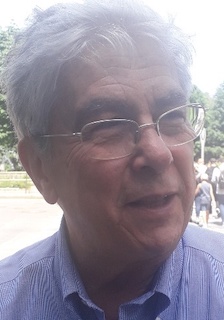
Avezzu' Guido
 guido.avezzu@univr.it
guido.avezzu@univr.it
 maurizio.boscaini@univr.it
maurizio.boscaini@univr.it
 vincenzo.giannotti@univr.it
vincenzo.giannotti@univr.it
 federica.gonzato@univr.it
federica.gonzato@univr.it
 piergiovanna.grossi@univr.it
piergiovanna.grossi@univr.it
 elisa.lerco@univr.it
elisa.lerco@univr.it
 stefano.maltese@univr.it
stefano.maltese@univr.it
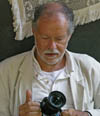
Mastrocinque Attilio
 attilio.mastrocinque@univr.it
attilio.mastrocinque@univr.it
 +39 045802 8386
+39 045802 8386
 marco.menato@univr.it
marco.menato@univr.it
 marta.minazzato@univr.it
marta.minazzato@univr.it
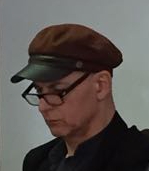
Pasini Roberto
 pasini.roberto@univr.it
pasini.roberto@univr.it
 +39 045802 8121
+39 045802 8121
Peresani Marco
 alberto.scandola@univr.it
alberto.scandola@univr.it
Study Plan
The Study Plan includes all modules, teaching and learning activities that each student will need to undertake during their time at the University.
Please select your Study Plan based on your enrollment year.
1° Year
| Modules | Credits | TAF | SSD |
|---|
One course to be chosen among the following2° Year activated in the A.Y. 2017/2018
| Modules | Credits | TAF | SSD |
|---|
One course to be chosen among the following3 course to be chosen among the following2 course to be chosen among the followingOne course to be chosen among the following3° Year activated in the A.Y. 2018/2019
| Modules | Credits | TAF | SSD |
|---|
One course to be chosen among the followingOne course to be chosen among the following3 course to be chosen among the following| Modules | Credits | TAF | SSD |
|---|
One course to be chosen among the following| Modules | Credits | TAF | SSD |
|---|
One course to be chosen among the following3 course to be chosen among the following2 course to be chosen among the followingOne course to be chosen among the following| Modules | Credits | TAF | SSD |
|---|
One course to be chosen among the followingOne course to be chosen among the following3 course to be chosen among the following| Modules | Credits | TAF | SSD |
|---|
Legend | Type of training activity (TTA)
TAF (Type of Educational Activity) All courses and activities are classified into different types of educational activities, indicated by a letter.
History of Medieval Art (i+p) - I MODULO PARTE (I) (2017/2018)
Teaching code
4S02160
Teacher
Credits
6
Also offered in courses:
- History of Medieval Art (i) of the course Bachelor’s degree in Humanities
- History of Medieval Art (i+p) - I MODULO PARTE (I) of the course Bachelor’s degree in Humanities
Language
Italian
Scientific Disciplinary Sector (SSD)
L-ART/01 - HISTORY OF MEDIEVAL ART
Period
First half of Semester 2 dal Feb 26, 2018 al Apr 21, 2018.
To show the organization of the course that includes this module, follow this link: Course organization
Learning outcomes
OBJECTIVES
The aim of this course is to offer a good basic knowledge of the history of medieval art and introduce some of its general features. Furthermore, it introduces students to the specific terminology and helps them to interpret and understand the works from a stylistic, iconographic, historic and technical standpoint.
The subjects of the teaching program, as well as the proficiency and skills that are to be acquired, are characteristic features of Cultural Heritage studies.
Program
The program and required reading listed below are valid only for the June 2018 examination session.
ASPECTS AND PROBLEMS OF 4TH-15TH CENTURY MEDIEVAL ART
The objective of this course is to offer an introduction to the study of medieval art. Given the extent of the Middles Ages, as well as the diversity and number of works and related problems therein, the course can only delineate the guidlines and examine certain representative subjects.
TEACHING METHOD
The course will consist of face-to-face lessons and at least two field trips to major medieval monuments in the Verona region; should there be a large number of students, the trips will be made in turns.
The e-learning platform will include the powerpoints presented during the lessons in order to provide a large body of images and an outline useful in studying the textbook, both for students who attend the lessons and those who do not.
For the entire academic year the lecturer or professor will receive individual students at the hours specified on the university web pages, without need to make an appointment. Any possible changes in, or suspension of the above timetable will be promptly announced on the university website.
The course program is the same for students who attend the lessons and those who do not, but it is advisable that the latter contact the professor before taking the examination.
COURSE TEXTBOOKS:
The preparation for the introductory course examination entails studying the textbook and other complementary texts.
• As for the textbook, students must study the chapters ranging from the Early Christian period up to, and including, the International Gothic period.
One of the following textbooks is also required reading:
- P.L. DE VECCHI - E. CERCHIARI, I tempi dell'arte. Dalla preistoria al Medioevo, Milano (Bompiani) 2000, volume I (da parte II, cap. 4, p. 158 fino alla fine)
- L’arte e la storia dell’arte, a cura di R. Scrinieri 1a (Il mondo antico) -1b (Il Medioevo), Milano (Minerva Italica) 2002 (vol. 1a, cap. 18-19, pp. 250-305; 1b, tutto)
- A. PINELLI, Le ragioni della bellezza. Dalla tarda antichità a Giotto, vol. II, Torino 2012
Students may also choose the following textbook:
P.L. DE VECCHI - E. CERCHIARI, Arte nel tempo, Milano (Bompiani) 1991 (da vol. I, tomo secondo (Il Medioevo), parte III, cap. I fino alla fine; inoltre vol. II, tomo I, cap. I, pp. 2-45)
Since late Gothic culture is almost always dealt with in the first chapter of a volume describing a later period (the Renaissance) that is not on the required reading list, students may study such a chapter from any textbook at their disposal.
The following texts are also part of the examination program:
- L. BELLOSI, Giotto, Firenze (Scala) 2000
- F. ZULIANI, La percezione del Medioevo, in L’arte medievale nel contesto (300-1300). Funzioni, iconografia, tecniche, a cura di P. Piva, Milano 2006, pp. 15-20 (this text can be downloaded from the university e-learning website)
- One of the following essays (at the beginning of the course students will be informed which photocopy shop has copies of these essays available):
. B. BREANK, Originalità e innovazione nell’arte medievale, in Arti e storia nel Medioevo, I. Tempi, spazi, Istituzioni, a cura di E. Castelnuovo e G. Sergi, Torino (Einaudi) 2002, pp. 3-69
. F. GANDOLFO, Cosa è giunto fino a noi. Distruzioni e perdite, in Arti e storia nel Medioevo, IV. Il Medioevo al passato e al presente, a cura di E. Castelnuovo e G. Sergi, Torino (Einaudi) 2004, pp. 33 – 76.
. G. OROFINO, “Leggere” le miniature medievali, in Arti e storia nel Medioevo, III. Del vedere: pubblici, forme e funzioni, a cura di E. Castelnuovo e G. Sergi, Torino (Einaudi) 2004, pp. 341-367
. E. PAGELLA, Vedere, copiare, interpretare: artisti e circolazione di modelli nell’ambito ecclesiastico, in Arti e storia nel Medioevo, I. Tempi, spazi, Istituzioni, a cura di E. Castelnuovo e G. Sergi, Torino (Einaudi) 2002, pp. 473-511.
. W. SAUERLÄNDER, Tempi vuoti e tempi pieni, in Arti e storia nel Medioevo, I. Tempi, spazi, Istituzioni, a cura di E. Castelnuovo e G. Sergi, Torino (Einaudi) 2002, pp. 121-170.
Examination Methods
EXAMINATION PROCEDURE
The examination is oral and may include the use of images. For both those who attend the lessons and those who do not, the exam will be based on the entire course program and the above-mentioned texts.
The oral examination aims at verifying the following:
- depth and range of the acquired knowledge
- correct use of language
- ability to connect areas of knowledge in a systematic fashion
- competence in analytic and systematic reasoning
The teaching program consists of two distinct modules for a total of 12 university credits: introductory and advanced. Students may take the module examinations together in a single session or in two separate sessions.
Type D and Type F activities
| years | Modules | TAF | Teacher | |
|---|---|---|---|---|
| 2° | Latin Epigraphy (i) | D |
Alfredo Buonopane
(Coordinator)
|
|
| 2° | History of Medieval Architecture (i) | D |
Fabio Coden
(Coordinator)
|
|
| 2° 3° | History of the Republic of Venice (p) | D |
Federico Barbierato
(Coordinator)
|
|
| 2° 3° | European Art History (i) | D |
Bernard Jan Hendrik Aikema
(Coordinator)
|
|
| 1° 2° 3° | Castelvecchio Lectures (City Art Museums) | F |
Alessandra Zamperini
(Coordinator)
|
|
| 1° 2° 3° | San Rocco lectures (Quinzano) | F |
Alessandra Zamperini
(Coordinator)
|
|
| 1° 2° 3° | C.T.G. Lectures | F |
Alessandra Zamperini
(Coordinator)
|
|
| 1° 2° 3° | Graphical representation of archaeological evidence I | F |
Giuliana Maria Facchini
(Coordinator)
|
|
| 1° 2° 3° | Karis - I ciclo | F |
Tiziana Franco
(Coordinator)
|
|
| 1° 2° 3° | Archeology laboratory of instrumentum domesticum | F |
Giuliana Maria Facchini
(Coordinator)
|
|
| 1° 2° 3° | Museology (i) | D |
Valerio Terraroli
(Coordinator)
|
|
| years | Modules | TAF | Teacher | |
|---|---|---|---|---|
| 2° | Medieval archaeology (i) | D |
Fabio Saggioro
(Coordinator)
|
|
| 2° 3° | History of the Republic of Venice (p) | D |
Federico Barbierato
(Coordinator)
|
|
| 1° 2° 3° | Castelvecchio Lectures (City Art Museums) | F |
Alessandra Zamperini
(Coordinator)
|
|
| 1° 2° 3° | San Rocco lectures (Quinzano) | F |
Alessandra Zamperini
(Coordinator)
|
|
| 1° 2° 3° | C.T.G. Lectures | F |
Alessandra Zamperini
(Coordinator)
|
|
| 1° 2° 3° | Graphical representation of archaeological evidence I | F |
Giuliana Maria Facchini
(Coordinator)
|
|
| 1° 2° 3° | Karis - II ciclo | F |
Tiziana Franco
(Coordinator)
|
|
| 1° 2° 3° | Archeology laboratory of instrumentum domesticum | F |
Giuliana Maria Facchini
(Coordinator)
|
|
| 1° 2° 3° | How to write your dissertation | F |
Alessandro Arcangeli
(Coordinator)
|
|
| 1° 2° 3° | Tracce nascoste | F |
Monica Molteni
(Coordinator)
|
|
| years | Modules | TAF | Teacher |
|---|---|---|---|
| 1° 2° 3° | Bibliography and Librarianship (i) | D |
Marco Menato
(Coordinator)
|
| 1° 2° 3° | Classification of archaeological Finds | F |
Giuliana Maria Facchini
(Coordinator)
|
| 1° 2° 3° | Castelvecchio Lectures (City Art Museums) | F |
Alessandra Zamperini
(Coordinator)
|
| 1° 2° 3° | San Rocco lectures (Quinzano) | F |
Alessandra Zamperini
(Coordinator)
|
| 1° 2° 3° | C.T.G. Lectures | F |
Alessandra Zamperini
(Coordinator)
|
| 1° 2° 3° | Graphical representation of archaeological evidence II | F |
Giuliana Maria Facchini
(Coordinator)
|
| 1° 2° 3° | Basic laboratory of data | F |
Maurizio Boscaini
(Coordinator)
|
| 1° 2° 3° | Laboratory of photo | F |
Marco Ambrosi
(Coordinator)
|
| 1° 2° 3° | Representation and Meaning in the Female Fashion between Renaissance and Baroque | F |
Alessandra Zamperini
(Coordinator)
|
| years | Modules | TAF | Teacher |
|---|---|---|---|
| 1° 2° 3° | 1887-2017: 130 years of the Museum of Ateste | F |
Patrizia Basso
(Coordinator)
|
| 1° 2° 3° | Classification of archaeological Finds | F |
Giuliana Maria Facchini
(Coordinator)
|
| 1° 2° 3° | C.T.G. Lectures | F |
Alessandra Zamperini
(Coordinator)
|
| 1° 2° 3° | Graphical representation of archaeological evidence II | F |
Giuliana Maria Facchini
(Coordinator)
|
| 1° 2° 3° | Ephigraphy of production and distribution | F |
Alfredo Buonopane
(Coordinator)
|
| 1° 2° 3° | In Itinere: Verona and the roman roads | F |
Patrizia Basso
(Coordinator)
|
| 1° 2° 3° | Laboratory of medieval archaeology | F |
Fabio Saggioro
(Coordinator)
|
| 1° 2° 3° | Workshop of Cultural Heritage Photography | F |
Stefano Marziali
(Coordinator)
|
| 1° 2° 3° | How to write your dissertation | F |
Alessandro Arcangeli
(Coordinator)
|
| years | Modules | TAF | Teacher |
|---|---|---|---|
| 1° 2° 3° | Archaeological research on the northern part of the Civita of Tarquinia | F |
Attilio Mastrocinque
(Coordinator)
|
| 1° 2° 3° | Archaeological excavation in Aquileia | F |
Patrizia Basso
(Coordinator)
|
| 1° 2° 3° | Scavo archeologico di Bastia di San Michele di Cavaion | F |
Fabio Saggioro
(Coordinator)
|
| 1° 2° 3° | Scavo archeologico di Canossa | F |
Fabio Saggioro
(Coordinator)
|
| 1° 2° 3° | Archaeological excavation in Gazzo Veronese | F |
Patrizia Basso
(Coordinator)
|
| 1° 2° 3° | Field archaeological research in Leno Monastery | F |
Fabio Saggioro
(Coordinator)
|
| 1° 2° 3° | Field archaeological research in Piuro settlement | F |
Fabio Saggioro
(Coordinator)
|
Career prospects
Module/Programme news
News for students
There you will find information, resources and services useful during your time at the University (Student’s exam record, your study plan on ESSE3, Distance Learning courses, university email account, office forms, administrative procedures, etc.). You can log into MyUnivr with your GIA login details: only in this way will you be able to receive notification of all the notices from your teachers and your secretariat via email and soon also via the Univr app.
Graduation
List of theses and work experience proposals
| theses proposals | Research area |
|---|---|
| Ambiti di tesi | Art & Architecture - Art & Architecture |
| Stage | Research area |
|---|---|
| Lavorare in archivio | Various topics |
